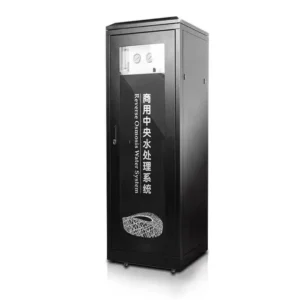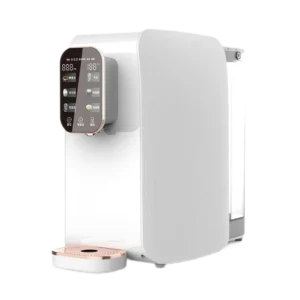Inside the Filter: What’s Hiding in Your Water Purifier?
The effectiveness of a water purifier lies in its filtration system, a complex network of components designed to trap and remove contaminants.
While the exact design varies by model, most purifiers use a combination of filter types, each targeting specific impurities. Understanding these
components can help users appreciate their purifier’s functionality and maintain it more effectively.
While the exact design varies by model, most purifiers use a combination of filter types, each targeting specific impurities. Understanding these
components can help users appreciate their purifier’s functionality and maintain it more effectively.

1. Pre-Filters: Typically made of polypropylene, these coarse filters act as the first line of defense, removing large particles like sediment, rust,
and sand. They extend the lifespan of subsequent filters by preventing clogging from visible debris, making them crucial for areas with turbid or well water.
and sand. They extend the lifespan of subsequent filters by preventing clogging from visible debris, making them crucial for areas with turbid or well water.
2. Activated Carbon Filters: One of the most common components, carbon filters are highly porous and excel at organic
compounds, chlorine, and volatile organic chemicals (VOCs). They also improve taste and odor by eliminating musty or chemical notes,
compounds, chlorine, and volatile organic chemicals (VOCs). They also improve taste and odor by eliminating musty or chemical notes,
making them essential for enhancing water palatability.

3. Reverse Osmosis (RO) Membranes: Found in premium models, RO membranes are thin, semi-permeable barriers that remove up
to 99% of contaminants, including heavy metals (e.g., lead, arsenic), microplastics, and dissolved salts. They operate by forcing water through
tiny pores under pressure, effectively addressing issues like hard water and high TDS levels.
4. Ultrafiltration (UF) Membranes: These filters have larger pores than RO membranes but still remove bacteria, viruses, and colloidal particles.
UF systems are popular in areas with moderate water quality, as they require less pressure and are more energy-efficient than RO models.
Water Purifier Factory, Water Purifier For Home, Water Purifier Machine,Water Purifier, Water Filter Purifier System
5. Post-Filters: Some purifiers include a final filter, often made of carbon or mineral stones, to adjust pH balance or add beneficial minerals like
calcium and magnesium. This step aims to enhance water’s alkalinity and (mouthfeel), appealing to users seeking “mineralized” drinking water.
Regular maintenance, such as timely filter replacements, is critical to ensure each component functions optimally. Neglecting replacements can
lead to reduced flow rate, compromised filtration, and even bacterial growth within the system. By understanding what’s inside their purifier,
lead to reduced flow rate, compromised filtration, and even bacterial growth within the system. By understanding what’s inside their purifier,
users can make informed decisions about maintenance and choose the right model for their specific water quality needs.
